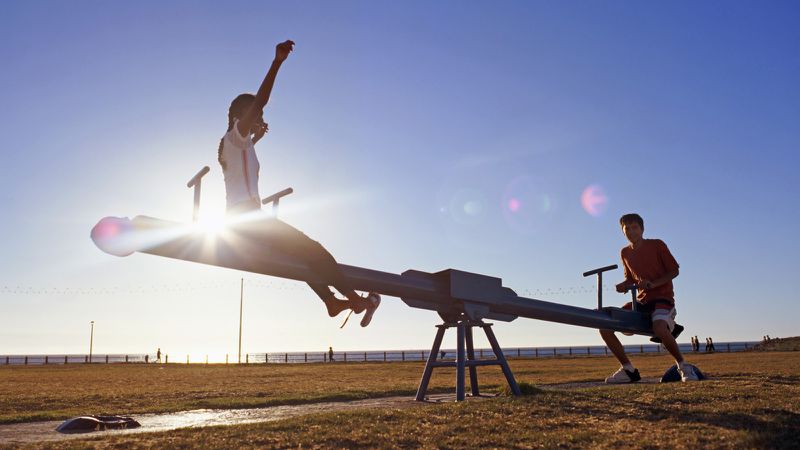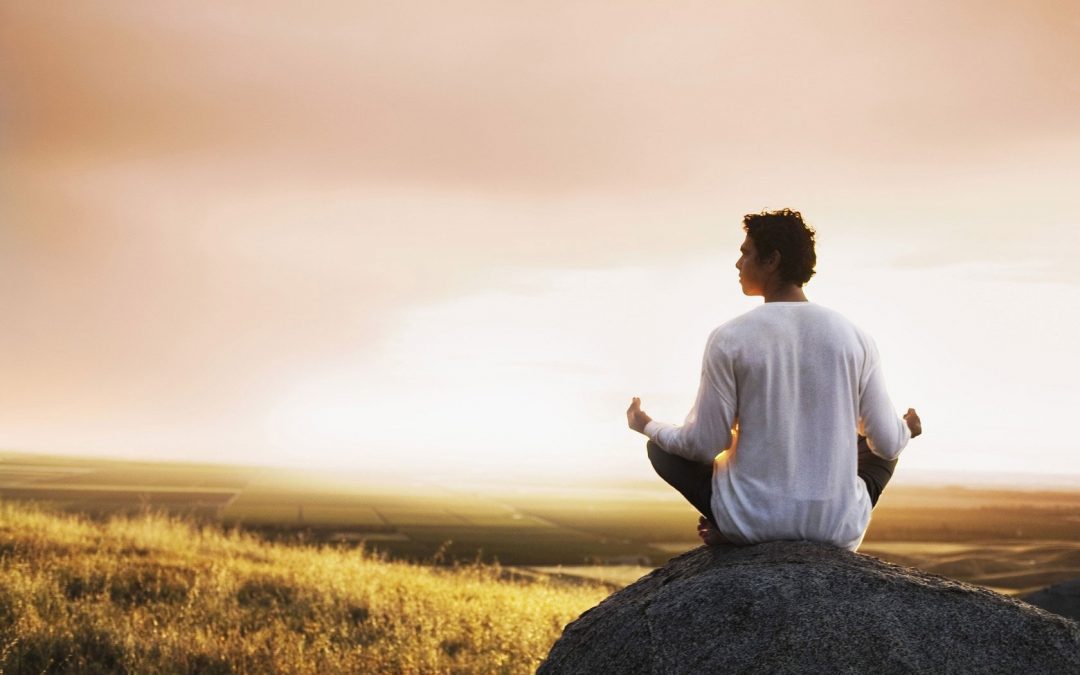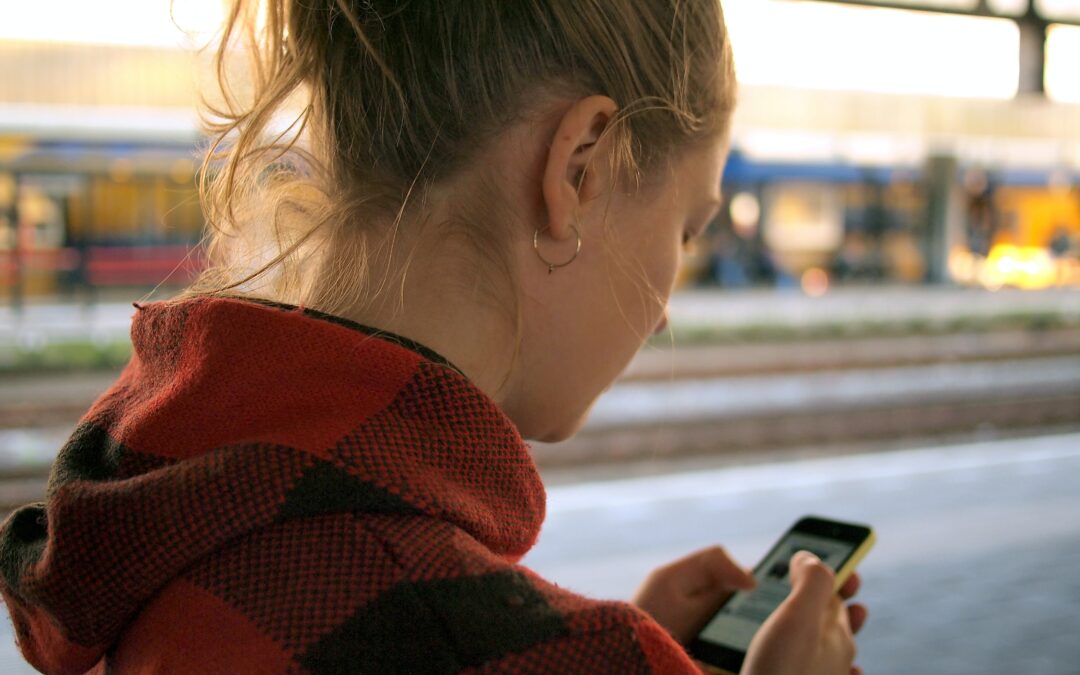
by Campbell MacBean | Nov 20, 2011 | Campbell MacBean, Wellness
Busyness seems to be the norm for many people now. Busy with work, busy with children, with friends, projects, catching up, keeping up, and keeping ahead. Although this seems to have become a trend, the pace has most definitely quickened with the exponential growth of internet, smart phones and general inter-connectivity. A whole generation of young people has grown up absorbing this technology into daily life. The norms for what is acceptable are changing so quickly it seems we no longer even see the goal posts, let alone when they are changed.
All of this busyness is doing. It takes up time, energy and if we are not careful can simply dominate our lives to an extent never before seen on such a scale. But we forget that doing is only a part of life. Underneath all this doing there is a place of being. In fact this place of being is always present but it can remain beneath the surface of our experience unless we take the opportunity to tune it to it as if it were a frequency we are not familiar with.
Formal meditation, whether we are sitting, lying down, walking are all practices of non-doing.
I say formal meditation because it is these practices that most of us think of when we hear the word ‘meditation’. As I mentioned in the recent post on mindfulness, these formal practices are one aspect of meditation. They are useful and practical precisely because by taking some time to sit or walk in meditation, we are taking the time to stop doing and notice instead what it is like simply to be.
One of the simplest practices of formal meditation is sitting with focused attention on sounds. Find a quiet spot to sit, either on a chair or on a cushion on the floor. Either with your eyes closed or open, spend some time relaxing as you sit. Breath in relax, breathe out relax. If you can hear traffic, or voices around you or even the sounds of nature simply listen to them and keep allowing yourself to relax and enjoy being here. You could also use some relaxing music. Other than sitting here you don’t need to do anything else right now. Stay with this for as long as you can just sitting and listening to the sounds around you. Take the time to simply be for a few moments longer.
by Campbell MacBean | Oct 18, 2011 | Campbell MacBean, Wellness
2500 years ago in northern India, Gautama Siddhartha went through a remarkable transformation. His transformation was so profound and all encompassing that very soon people began asking him in all seriousness whether or not he was actually a human being. Time and again they would ask him ‘who are you’, ‘are you a god’, ‘how do you come to be this way’? Every time they asked this of him he replied simply “I am awake”. In the Pali language spoken by this man he came to be known as the Buddha, the ‘awakened one’.
People may have believed him to be not of this world but at the heart of it all was his intense capacity to pay attention to what is happening right now, in the present moment. This is mindfulness. Or what Jon Kabat-Zinn describes as moment-to-moment, non-judgmental awareness. It is a capacity that all human beings have but it can seem so simple that we ignore or forget how to do it. It is the most basic, most fundamental and also the easiest of all the practices that have come to be known as meditation.
Another way of describing mindfulness is the capacity we all have to know what is happening as it happens. It becomes mindfulness when we actually begin to cultivate this capacity of paying attention as we do things. We can cultivate fitness by starting to jog or go to the gym. We cultivate mindfulness by taking a little time to pay attention on purpose.
Start small by taking time to pay attention while you do things in your day. As you walk to work, begin to notice yourself walking. Notice the feel of the pavement, the feel of the weather and the sounds around you. Much of our lives are on automatic pilot and without even knowing it we are being mindless. So take the time to notice the colours of things you pass regularly, you may be surprised. Another practice is taking a few minutes to make a cup of tea. Make it mindfully by paying attention to what you are doing as you pour the water, let it steep and then add the milk. Notice the heat as you hold the cup and drink the liquid. Notice the taste.
You might find many activities you do every day that you can transform simply by cultivating your capacity to pay attention, on purpose as it happens. The other thing is learning how to do these things kindly rather than judgmentally – but that is for another post!

by Campbell MacBean | Oct 8, 2011 | Campbell MacBean, Wellness
The family of three came bouncing in from the laneway with their dog and greeted the owner from outside the cafe. The father and son waited at the door with their joyous cream Labrador wagging his entire body, while the mother came in to order a take away breakfast (coffee and bacon and egg rolls). He was one of those dogs that seem to make it their life’s mission to be loved by all and nearly ran inside while he made an eye popping greeting to the cafe owner – clearly a big fan. It seemed this little ritual was probably a regular occurrence. All three were from North America somewhere but had made this little inner city area their home. You could say they belonged.
Part of the reason they belong is because of the sense of community that little owner run cafes like this one can create. I was there for forty minutes having breakfast prior to doing some work in Sydney. During that time this cafe owner stood at the helm of his well used Italian machine greeting everyone and engaging in some sort of conversation. He seemed to make a point of making eye contact and greeting and farewelling everyone who came in even if it was just for their daily espresso. I noticed that some of those making their way to work under the grey cloud that hovers pre-office seemed to lighten up with this opportunity of being acknowledged by a familiar face who was also taking an interest in their well being.
Our society has become increasingly atomised and isolated. Within the industrialised West education and wealth have created immense opportunities for the individual for different types of work and a much more mobilised workforce than existed pre WWII. But the cost of this mobilisation and individual choice has pulled apart the seams of the smaller communities in which most of us lived. I am not saying whether this is good or bad – it is what it is. But what it means is that we tend to live more isolated lives, and human beings have evolved in small to medium size groups, not in isolation.
So many more people now are working from home or are self-employed. I see them with their laptops out, meeting with clients or making phone calls in my local cafe in the small Southern Highlands town where I have my practice. Having somewhere to come where people recognise you and know you by name, somewhere to chat and catch up with any local news, to meet and say hello to others who work nearby, all this fosters in a small way a sense of community and belonging which we all really need to help us feel a part of the whole. It doesn’t sound such an earth shattering thing the fact that an owner run cafe can create a sense of community. But no matter what new technology brings or how embedded Facebook or Twitter become in our lives, we actually need a physical, not a virtual place to feel we belong.
Perhaps cafes are a way to combine the virtual and physical worlds in which we now live. You could call it the tail wagging Labrador of the heart.

by Campbell MacBean | Jul 19, 2011 | Campbell MacBean, Wellness
Speech given 19th July 2011
It is London in the UK, the year is 1992 and I am 25 years old. I am standing on stage of Sadler’s Wells theatre just before the curtain goes up. It’s an autumn evening outside, wet, misty and cold. Inside the theatre is charged with the warmth of more than a thousand people, a packed house. We are about to perform opening night of Bizet’s best known Opera, Carmen, a production made up of young people in their 20s. In the Royal box sits Diana, Princess of Wales here for opening night as patron of the theatre company, obviously and prominently without her husband Prince Charles. The overture finishes, the curtain rises and I am down stage ready to sing.
Since being asked to come and speak with you about confidence and humility I really had to think hard about what to say. Finally, I decided to talk a bit about my own life experience and see if I could illustrate these two concepts as I have lived them. Hopefully you can then decide what you think about these two things that seem totally unrelated at first glance.
As you know I am a Psychologist in private practice in Mittagong. But for most of the years between 16 and 28 my one ambition in life was to make a career as an opera singer. I studied music and singing at school, then at Sydney University and finally in London. I worked for British Youth Opera then Opera Australia for a number of years. I made the front page of Opera magazine from an Opera Australia production of Monteverdi’s Coronation of Poppea in 1993. It may not have been Who Weekly, but it seemed pretty good at the time!
If you had asked my friends back then whether I was confident, I think most of them would have said “absolutely”! Singing had always come naturally to me; I was the lead in many school productions and enjoyed acting and being on stage. I had won several singing competitions. It seemed I was on the right path, but one thing kept getting in the way – my own voice.
Initially trained as a Baritone, I learned a lot of this repertoire, but several teachers insisted I was not a Baritone, I was a Tenor. So then I trained as a Tenor. But this is not as easy as it sounds. Many other good singers have crashed on the rocks of frustration and confusion trying to go from Baritone to Tenor. Over time it started to dawn on me that maybe I was going to be another one.
However, while this inward battle raged, outwardly I remember appearing confident. Good at showing others that everything was under control, I kept this up. In some performances at this time I was literally flying by the seat of my pants. I did not know from one night to the next whether my voice would hold. Mostly, thankfully, it did. But in rehearsal for an early Music performance at historic St James Church in Sydney, it became clear that I could not sustain some of the music. The director had a private rehearsal with me, heard what was going on, and kicked me out of the concert.
I realise now that much of my seeming confidence at the time was based on what I had done in the past or on my future potential. I could visualise singing the notes but at the time my voice couldn’t do it. It was the most frustrating thing I have ever experienced. Several other male singers who I had competed against were going on to careers in Europe and America and I was sure I had the ability to follow. But my voice didn’t seem to agree.
As a singer, your body is your instrument. Gradually, as I really started to take notice, it became clear to me that my body was either letting me down or telling me something. But still on the outside I appeared confident, right up until the point when I decided to quit professional singing at the age of 28.
Which brings me to important point No. 1: for true confidence, actions speak louder than words.
I finally learned that no matter how much I wanted it, just telling myself and believing I could make it as a tenor in a singing career wasn’t enough.
Life goes on. After some major soul searching and the support of my family and my girlfriend (soon to be my wife), I went back to University to start a degree in Psychology. I didn’t sing at all for 8 years.
The word confidence comes from the Medieval French and Latin words confidence or confidentem meaning ‘firmly trusting or bold’. The original Latin word fidere means ‘to trust or to have faith’. If you asked me the question today, “when you were working as a singer did you believe and trust in your voice?” I would answer absolutely not.
So why did I say earlier that I appeared confident to my friends? I think the answer is that I was not actually confident. What I had was a truckload of bravado.
This word comes from Spanish and Italian and means “to brag, boast or be defiant”. In the Opera even today, when someone sings well the audience yells ‘bravo, bravo’. To get up in front of an audience night after night you have to be brave, and looking back I know I showed a lot of courage. But what I know now that I didn’t know then is that bravado is not the same as confidence. Bravado is about defiantly (and sometimes desperately) keeping up the appearance that everything is ok rather than a quiet, rock solid trust in your ability.
Looking around today on the internet, on TV, movies, magazines and the whole world of popular culture I think it is easy to mistake bravado for confidence. In a time when people can become a pop star overnight after posting a video on YouTube I would imagine that many of you would be a bit confused about the difference too. Many of you, I would imagine, believe that you have to show your friends and those around you that you are confident by doing things that you are not confident about at all. Because that’s what confidence means right? And it’s really, really, really important to be confident, even when you don’t feel it, right?
Well, maybe not.
Don Bradman, the cricketer from Bowral, who you’ve all probably heard of a thousand times, was supremely confident. But he never felt the need to show off or prove himself to others. In fact, even though he became the greatest batsman the world has ever seen, he always seemed to have a lot of humility. That’s because, despite being naturally gifted, he also practiced for years, and years and years as he grew up. So when he played first grade and international cricket he knew that he could hit a ball to any place in the field he wanted. How? Because he had true confidence in his ability to do this and he didn’t even need to think about it.
Actions speak louder than words.
This brings me to important point No. 2: follow your bliss.
This famous phrase comes from the writing of Joseph Campbell, an academic mythologist and writer of many books, the most renowned being “The Hero with a Thousand Faces” (well worth reading by the way). Follow your bliss is so important as to be a universal truth in my opinion. What I have found is that true confidence doesn’t come from bravado, even though bravado can be very helpful to get you through some tough situations (hence the saying ‘fake it till you make it’). True confidence comes from following your heart in doing the thing that you love and then working hard, practicing and patiently building your ability to do it.
I would say I am confident now, as a psychologist and in my own ability, though I still have a great deal do learn. But I don’t feel the need to prove this to others as I did when I was working as a singer. I make mistakes every day because that is just the way things are and it is how I continue to learn. I became a psychologist because I followed my bliss and pursued a career as an opera singer … and failed. As I was struggling so much with my own voice, I noticed I was becoming more and more interested in listening to others tell their own stories about struggle.
In a speech from 2008 at Harvard University, the author J.K. Rowling talked about the crucial benefits of failure in her life and how she followed her bliss at university rather than doing what her parents wanted. But in failure she realised she had seen the bottom, had nothing left to lose and so followed her heart to do what she had always really wanted, to be a writer. Failing as an Opera singer has paradoxically led me on to the path that I feel deeply is my vocation. As a psychologist I have the immense privilege of helping people wrestle with tough, difficult issues so that they can shine a light into their souls and begin to understand the truth about themselves. This can often be hard, slow work but I get to help people create meaning and purpose where previously there had been brick walls.
So remember these two points.
Follow your bliss. If you know what it is you truly love in life then follow it, but be prepared for things not to work out the way you thought they might and keep listening to your heart and what life is telling you. And when you follow your bliss remember, for true confidence, actions speak louder than words. Don’t imagine things will all fall in your lap just because you are following your heart; you also have to work and work and work at it. But in your bliss lies the truth that your heart already knows.
I will finish by quoting Rainer Maria Rilke, a German writer, in his ‘Letters to a Young Poet’
Have patience with everything unresolved in your heart and try to love the questions themselves as if they were locked rooms or books written in a very foreign language. Don’t search for the answers, which could not be given to you now, because you would not be able to live them. And the point is to live everything. Live the questions now. Perhaps then, someday far in the future, you will gradually, without even noticing it, live your way into the answers.

by Campbell MacBean | Jul 16, 2011 | Campbell MacBean, Wellness
Being Nobody, Going Nowhere is the name of a book by Ayya Khema about Meditation. I remember the look of genuine surprise and even shock of the woman behind the counter when I bought this book. “Being nobody, going nowhere, how bizarre”! she exclaimed. Interestingly she made this comment while ringing the till of a bookshop that specialises in philosphy, comparative religions and spirituality. Presumably she would have been familiar with many different notions of spiritual practice. But the title of this book seemed to rattle her.
Possibly this is because the concept of being nobody, going nowhere is a notion that rattles our assumptions about the solidity we feel about ourselves.
There is an increasing interest in Meditation practice in western countries and one sees more and more images claiming to illustrate it. Phone advertisements that show a person (usually a beautiful, slim, young woman) seated cross legged by the ocean. Retail nurseries with various statues of a buddha like image for the garden, or homewear outlets with reclining buddhas that one can purchase to place in the living room. It seems that admist the relentless busyness and increasing pace of our ever more technologically connected lives, we crave the little havens of peace and calm that these images seem to promise. But always it is the external image or the fantasy that we focus on.
Meditation itself is the name we give to a number of practices of focused attention. Based loosely around Buddhist and other eastern concepts it is a way of cultivating Mindfulness, or open-hearted, moment to moment, non-judgmental awareness (Kabat-Zinn, 2005). It is a practice that from the outside appears to have much mystery about it, but is in fact a way of nurturing, caring for and supporting our minds. Much like we care for our bodies by showering every day.
In coming posts I intend to explore both the many ways we can meditate and some of the good reasons why we might wish to cultivate this in our lives.






